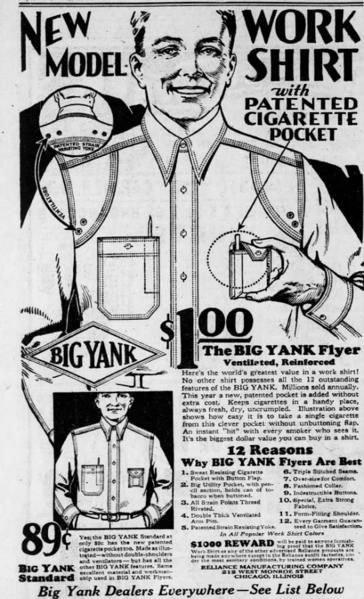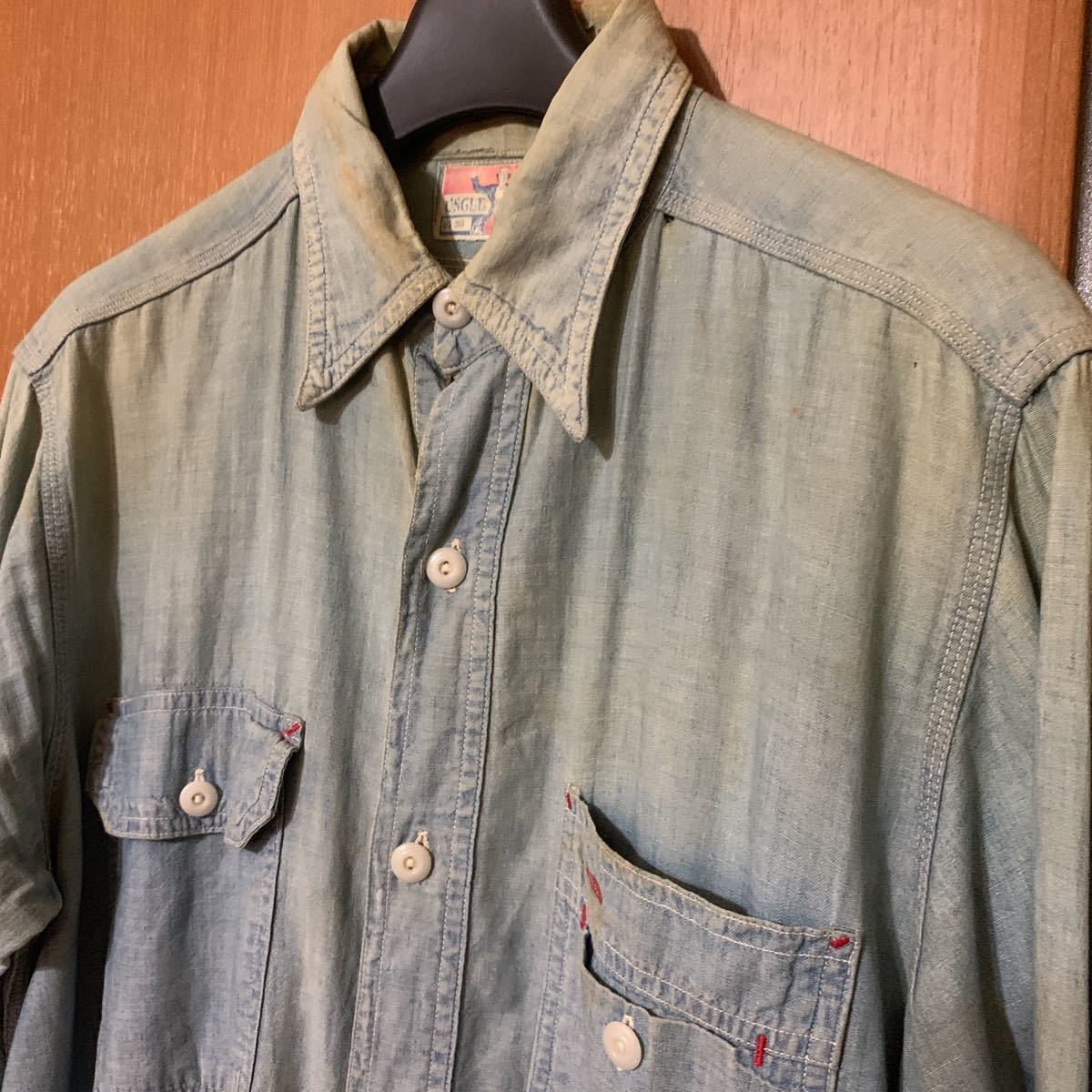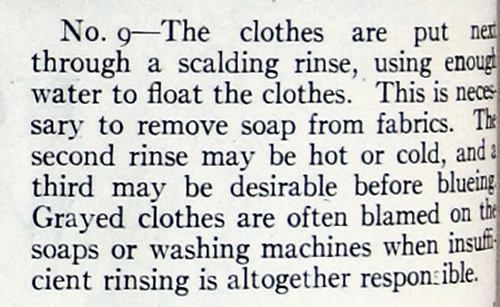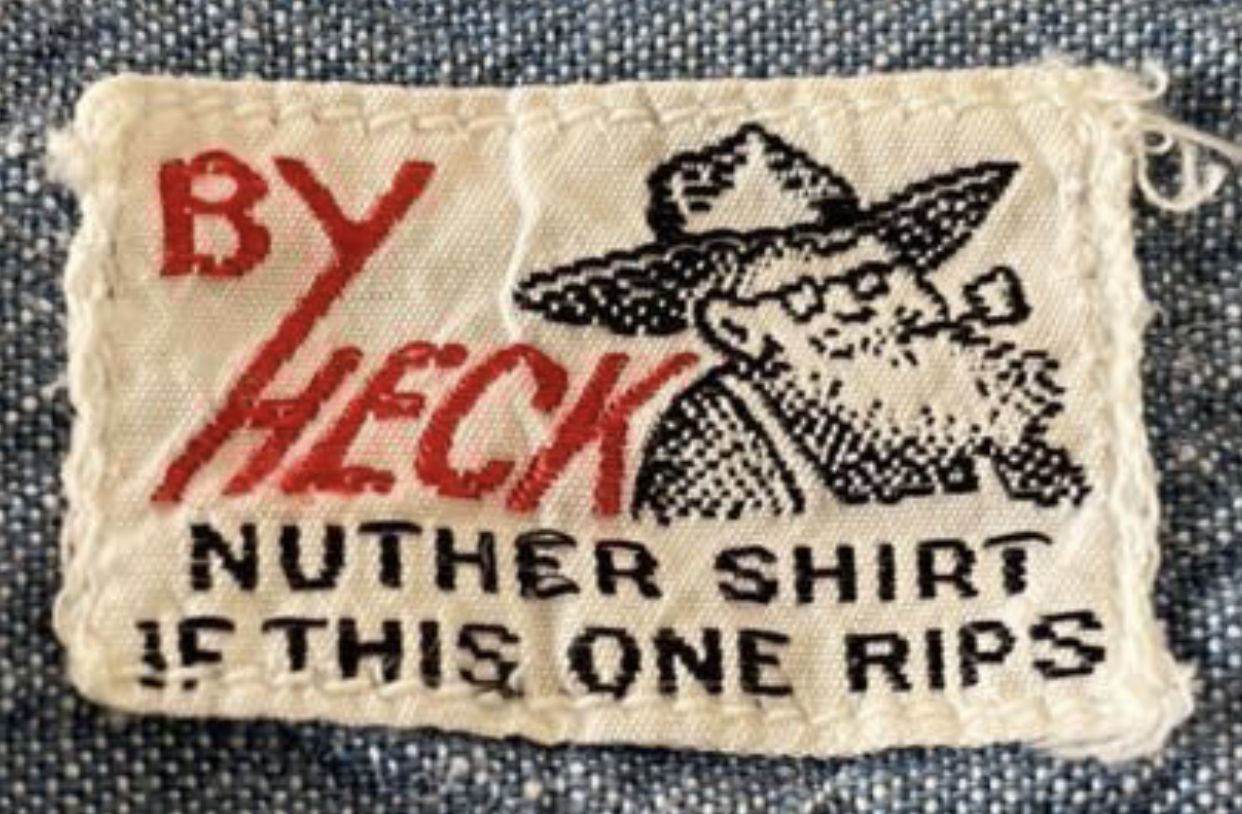-
Posts
1832 -
Joined
-
Last visited
-
Days Won
19
Content Type
Profiles
Forums
Events
Gallery
Store
supertorial
Classifieds
Posts posted by Iron Horse
-
-
^^


Also, the chest pockets are chorecoat-sized and too big, and there's a pocket watch pocket but no angled hole in the placket for the pocket watch chain to anchor to. I've been seeing that a lot lately. Not that the vast majority of people are using watch pockets for a pocket watch, but if you're going to do a repro style then go for the gold. Case in point:
 5
5 -
2 minutes ago, Broark said:
Hard telling what they're going for, but they also recently made a short sleeved long sleeved shirt.

Can't find a picture right now but it was horrible.Maybe it's to prevent your arm from getting sunburned while driving?
 1
1 -
14 hours ago, Broark said:
For you guys that were discussing how much you dislike asymmetrical pockets, you're really going to hate this FC x Post O'alls chambray.

Going for a repro modern thing, are they?
 Pocket on the right is at the right height for a repro shirt (at or just under the third button), pocket on the right is like most modern shirts.
0
Pocket on the right is at the right height for a repro shirt (at or just under the third button), pocket on the right is like most modern shirts.
0 -
2 hours ago, IDIOT BITCH said:
Big Dogs-tee type of reader
Dude.

Haven't seen one of those since like 1996.
3 -
On 9/30/2019 at 5:01 AM, ecsong187 said:
Can’t get into moc toes. They always look so bulbous and like clown shoes to me.
also Being in Seattle where it pisses rain all the time. The stitching in the top of the toe lets in a lot of water. Especially when you don’t notice a puddle.This happpened to my RW875s after the stitching started to split. I put some Vaseline in the split areas of the moc and no rain got in again. YMMV though!
2 -
-
16 hours ago, mpukas said:
yeah, it's most commonly referred to as a chin strap, but that's not really accurate. Not exactly sure, but I think historically it was called a throat strap/tab.
It's gone by a number of terms, from extension neckband to storm collar, tab collar, and more. At some point in recent history somebody started calling it a "chinstrap" and that stuck, but it it shouldn't go over the chin, just to clarify.
5 -
Yeah, it’s too bad, they’d match your style well Aries!
 1
1 -
-
10 hours ago, ecsong187 said:
Looks a lot better than my rear in the 47s! Haha
Now that I look in the mirror, the diaper butt is more pronounced when I’m standing up normally. But I really don’t mind it or hip flare; I just embrace the repro look.
 0
0 -
I know you’ve been dying to see my rear in jeans, so here’s what my FW43s look like from the back:
 13
13 -
I have a Cushman cigarette pocket shirt where the cig Pocket has been moved up so that the buttons align; it’s not what the original Big Yank shirt was like, but it’s not a bad adjustment:
Big Yank cig pocket shirt debut in 1930, before the introduction of the premium Flyer model with ventilation holes and front shoulder yokes:
The Flyer:
 12
12 -
54 minutes ago, ecsong187 said:
I want this but don’t smoke. Maybe use as phone pocket? Haha
If it fits!

I’d love to make my own version of this, maybe after my next couple of products are out.
4 -
12 hours ago, ColonelAngus said:
Yeah more or less. I was thinking of the new flannel shirts that Samurai just came out with via Okayama Denim. The pocket shape/size are different so it's hard for me to like it. I prefer symmetry
The Samurai shirts' pockets are based on ones from a vintage 1930s-40s Uncle Sam cigarette pocket shirt, basically their take on the cig pocket shirt after Big Yank led the way starting in 1930 with their Flyer model. AFAIK, Uncle Sam kept using this pocket style into the '60s:


Here you can see how it functions as a pocket-on-pocket design, with the cigarettes meant to go on the top pocket and thus kept away from a sweaty chest:

 8
8 -
The 43s look fine to me!
0 -
On 9/1/2019 at 7:59 AM, mlwdp said:
Just curious, do most of you on here who buy one wash styles usually wash the denim before first wear? I've been debating this regarding my new one wash pair from Trophy regarding hemming and shrinkage.
I usually give them a warmish soak. Who knows, maybe people in the store were trying it on.
0 -
On 8/27/2019 at 11:04 PM, cusswords said:
I don't mind colored wefts, but many of them are in made for the purpose of creating higher contrast fades which isn't really something I care about.
There was a PBJ-Pronto collaboration that used orange weft denim a few years back, and it was just hideous. Considering that orange and blue opposites on the color, it really brought "high contrast" to a new level.
I bet that would kill it in Denver. Like next-level Zubaz.
4 -
1 hour ago, SmokeStackLightning said:
Anyone have an idea of who offers chain stitch hemming in a narrower/TCB style width?
Kurt Chen at Faith Co. in Taipei does the closest I've seen to TCB/Sugar Cane factory hemming. Might send him a DM on Instagram.
1 -
Well, at least the apology is sewn onto the shorts beforehand.
13 -
-
Pedro, you could likely chime in on this, but from what I gather, for most families wash day was on Monday and lasted until Tuesday or even Wednesday.
I've been reading about this lately after taking another look at a second-hand pair of Sugar Cane jeans I got from Japan. The previous owner had obviously washed them in very hot water as the patch was pretty well fried, but also because the weft was so white and the denim/fades had a different look and feel to it, and there was little in the way of damage or blowouts aside from an unraveling hem.
Since then I've been washing with soap powder and hot water but also reading more about how laundry was done in the past.
Here are some descriptions from the 1930s, for example:
https://www.findmypast.com/1939register/the-home-1939-laundry
"On a Sunday evening, copper and dolly tubs might be filled with cold water in preparation for wash day. Clothes were sorted and segregated into woollens and cottons and colours and whites. As modern day biological detergents were not available in 1939, exceptionally dirty clothing like overalls would be left to soak overnight with soap flakes added. White shirts and blouses would stand overnight in cold water containing a "blue" whitener.
At the start of wash day the electric copper was turned on, or a coal fire was lit under the brick copper to ensure that the water in the tubs was hot enough. A dolly peg, (an item resembling a four or six-legged wooden stool, out of which a wooden "T" piece protruded), would be used to agitate the items that had been soaking overnight. Rotating the dolly peg in this way was a physically demanding and tiring affair.
The washing process itself involved lifting the items from the cold soak and wringing or mangling each item before transferring them, with more soap flakes, into the copper for boiling. Items that remained soiled, even after an overnight soak, were rubbed on a scrubbing board before being transferred to the copper. A clothes mangle, a hand operated machine consisting of two rotating rollers (which presented a quite serious potential hazard to anyone not paying attention), would be used to squeeze out all the excess water. Clothes would then be hung out to dry on a clothes line, or laid over a clothes-horse next to the kitchen or living room fire."

Would jeans like these have gone through the same process?
 8
8 -
Can you really get soap out without using hot water?
'Back in the day' people boiled their laundry (hence all those jerky patches). Here's a laundry guide from 1927:
 1
1 -
In related news, Instagram is testing out hiding like counts:
https://www.cnet.com/news/instagram-is-now-hiding-photo-like-counts-in-australia/
"Following a similar test in Canada back in May, Instagram is testing the new approach with users in Australia. Under the new system, you can see how many likes your photos get, but your followers won't be able to. Similarly, you can't see how many likes other peoples' photos get. "
5 -
3 hours ago, JohnnyUtah247 said:
@redragon that’s a sweet umbrella man.
Looks like Nigel Cabourn (?)
1














Shoes that look better with age...
in superdenim
Posted
Hozho makes some interesting boot bling: